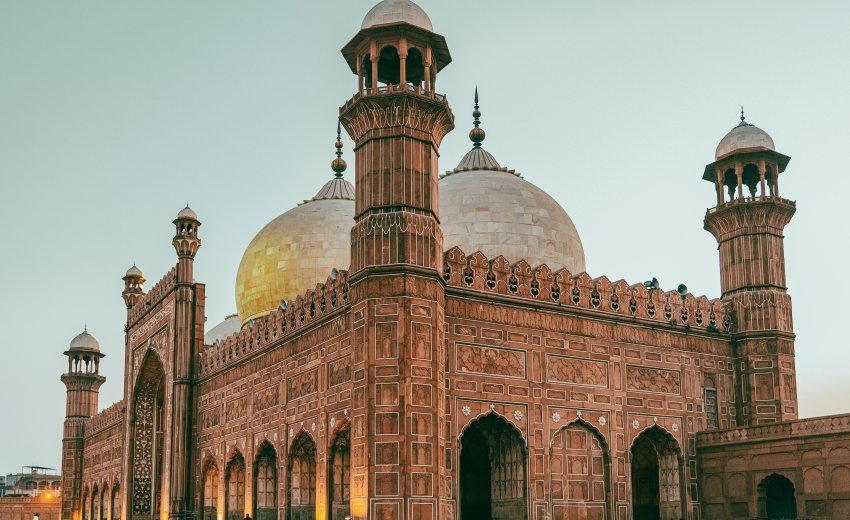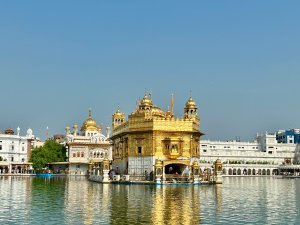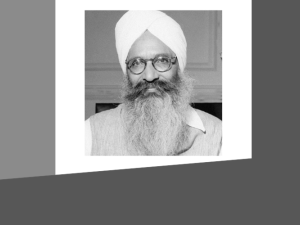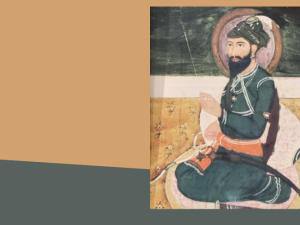While England was busy making preparations for the grand Coronation celebrations of King Charles III, The Guardian published a story on April 6, 2023 titled “India archive reveals extent of ‘colonial loot’ in royal jewellery collection”. Two investigative journalists, David Pegg and Manisha Ganguly have uncovered a remarkable file that is forty-six pages long in the archives of the India Office, which was originally prepared in 1912 when Queen Mary (the grandmother of Queen Elizabeth II) commissioned an investigation on the origin of imperial jewels. The people of England were surprised to read that King Charles III’s favourite belt was originally a ‘gold girdle inlaid with 19 large emeralds’ which had been used by Maharaja Ranjit Singh to decorate his horses earlier. Maharaja Ranjit Singh was known as a connoisseur and a wonderful collector of jewels, including the world famous Koh-i-noor diamond. This is further corroborated by Lord Auckland’s sister, Fanny Eden, who visited Lahore in 1838. She wrote in her journal that the Maharaja’s gems were so plentiful that he put his very finest jewels on the horses. She further recorded her true feelings, “If ever we are allowed to plunder this kingdom, I shall go straight to their stables.” This soon came to pass and the Sikh kingdom was robbed of its most precious collection.
Among the jewels plundered from the Sikh kingdom was another necklace strung with 224 large pearls called the Timur Ruby. Leslie Field, a specialist on royal jewellery wrote in 1987, “One of the Queen Mother’s most impressive two-row pearl necklace, made from 222 pearls with a clasp of two magnificent rubies surrounded by diamonds that had originally belonged to the ruler of Punjab.”
The article in The Guardian has raised a pertinent question that it is necessary to have a detailed study of the Toshakhana (The Royal Treasury) of the Sikh rulers of Lahore (1800 to1849). Punjab was the last state to be taken by the East India Company. Soon after annexing Punjab, Lord Dalhousie, the Governor General, appointed Dr. John Spencer Login to take over the possession of all royal belongings and to prepare an inventory of the Toshakhana. The royal treasury was located in the Lahore Fort. Login took the assistance of Misr Beli Ram, the manager of the treasury for this task. The British were astonished to see the gold, diamonds, and gems of high value that were kept wrapped in folds of velvet. Among these riches was the Koh-i-noor, the costliest diamond in the world. This was taken by Nadir Shah from Delhi to Kabul. Maharaja Ranjit Singh won it back and he used to wear it on his left arm during durbar assemblies.
Nazir Ahmed Chaudhry, the Secretary of the Punjab Archives in Lahore (Pakistan) has written a chapter on the wonders of the Maharaja’s Toshakhana in his book Lahore Fort: A Witness to History. He praised Maharaja Ranjit Singh for his collection of the relics and artefacts of all religions. The Toshakhana conserved the sacred relics of Prophet Muhammad (PBUH), some locks of his hair (Mui a Mubarak), his shoes and a copy of the Holy Quran in Kufic characters. The sword of the legendry Rustam of Iran, the Afghan king, Shah Shuja’s throne, Maratha ruler, Holkar’s sword and Vizier Fateh Khan Kamal’s sword were also kept in this treasury. He also mentions the luxurious clothing and ornaments of the royal family, including that of the Maharaja’s grandson, Naunihal Singh, the jewellery of the Queens, the Kashmiri shawls and the velvet tunics. He speaks of pavilions made from pure gold threads and Persian carpets. The records also mention pots overflowing with gold and silver and the personal belongings of the royal servants and soldiers that were also of great value. The gold chair of Maharaja Ranjit Singh is now exhibited in the Victoria Albert Museum, London.
It is very unfortunate that the Sikhs lost their most sacred relics in this process of colonial confiscation. Historical records have mentioned that Guru Gobind Singh ji’s sacred plume that adorned his turban, was kept in the Toshakhana and Maharaja Ranjit Singh used to touch it in reverence every day. The museum documents recorded this plume as ‘Kalgi-e-Kuchh’ and the same is done by Login. He sent all the artefacts and other material to the British capital at Calcutta under heavy security of the British army. It was Lord Dalhousie who had to decide what to do with such rare heritage. He is believed to have kept many precious heirlooms for his own family. The remaining artefacts and pieces of jewellery were sent to London to Queen Victoria on a special ship. In 1965, W.C. Archer, a British art historian and curator, found various weapons belonging to Guru Gobind Singh ji from the Residency of Lord Dalhousie’s family. These were brought back to India by the Prime Minister, Lal Bahadur Shastri in 1964 and restored at Takht Sri Kesgarh Sahib at Anandpur Sahib. However, till date there is no trace of the sacred Kalgi, which went missing in Calcutta in 1850.
During my visit to the Victoria Albert Museum in 1975, I saw the Mughal plumes as being described as ‘diamond studded in jade’. It occurred to me that Guru Gobind Singh ji’s Kalgi was probably made of jade, but described as Kalgi-e-Kuchh (glass) by Misr Beli Ram who was perhaps not aware of jade. There, in Victoria Albert Museum, I also saw one unidentified jade Kalgi. In the records it is mentioned that a British Army officer has brought this from Calcutta and later on it was displayed in an exhibition in Paris before being brought to the Victoria Albert Museum.
We have to look beyond the narrative of Toshakhana inventory prepared by Login. The British authorities and historians must prepare an exhaustive list of the belongings of the Sikh kingdom that were looted in 1849. Further investigations are required to know what happened to the Kalgi after it reached Calcutta. Historians must try to establish the trail of the jewels, artefacts and manuscripts belonging to the Lahore kingdom, through meticulous research. Many countries in the world are now demanding the return of their heritage that was taken by former colonial powers. Publication of a catalogue of what was taken from the Sikh kingdom in Lahore is the least that the British Government can do.






